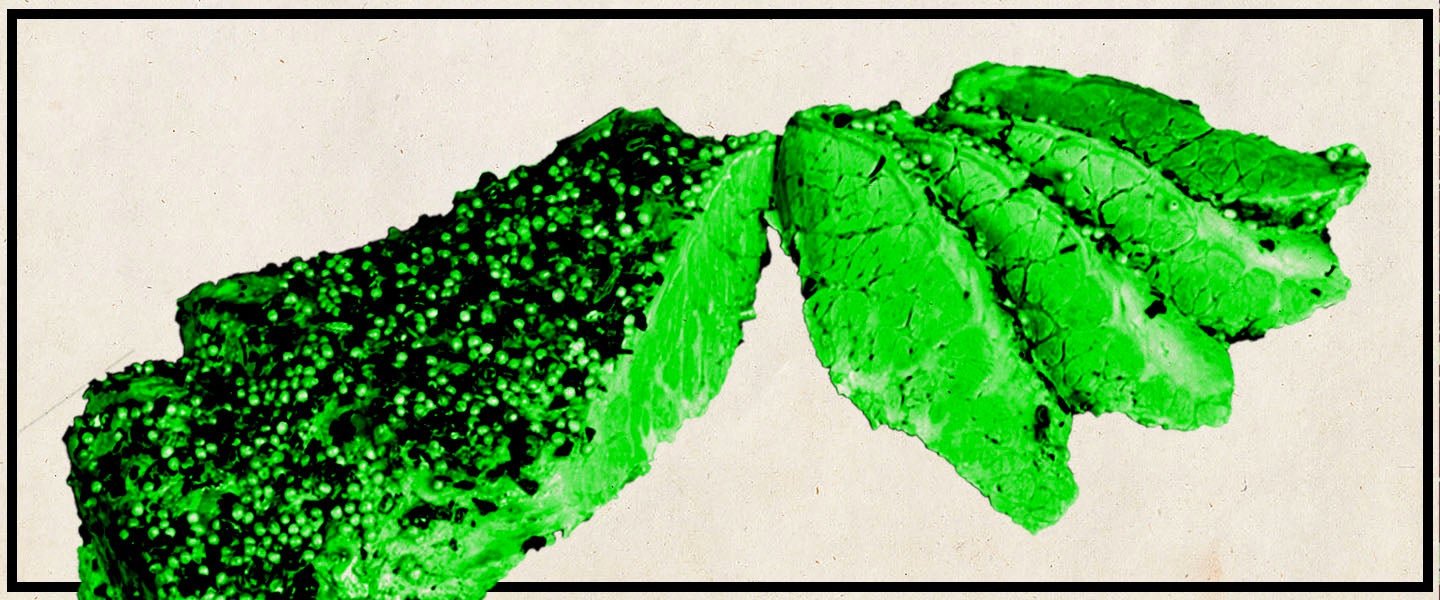I cooked my first St. Patrick’s Day dinner when I was 10. It was 2002, and I was no doubt wearing one of those festive, kelly green T-shirts from Old Navy. I had no plans to prepare the meal, and I’d never even made dinner before, let alone catered a party for my drunken family. In fact, as I walked home from school that afternoon, my only concern was getting in my mom’s car to grab a Shamrock Shake from McDonald’s as soon as possible.
However, my parents were nowhere to be found when I got home. My grandpa was there, but he was well past his driving years (despite his best efforts to the contrary). I knew my parents had a tradition of meeting up with some of our family members at the local Irish bar around lunchtime — okay, closer to 11 a.m. if I’m being honest. (St. Patrick’s Day is also their wedding anniversary, a choice my mom made purposefully, though not necessarily conscientiously.) The high Irish holiday is about the only day of the year my mom drinks. Still, she’s always sure to make up for lost time, pounding vodka cocktails with her brothers, sisters, nephews and nieces while my dad smokes cigarettes and drinks cans of Dr. Pepper he’s brought from home. Afterwards, he drives everyone home in his SUV.
Romantic, right?
Everyone must have gotten especially drunk this particular year, though, because there was still no sign of them at home as our annual dinner party neared — i.e., the corned beef should have already been boiling on the stove.
My family is quintessentially Irish-American in that our relatives have been here for nearly two centuries but most of us have never even been to Ireland. At least not yet. In fairness, corned beef is quintessentially Irish-American, too. According to the Smithsonian magazine, while there’s been an Irish tradition of preserving beef with salt as far back as ancient times — one that peaked in the 17th century as Ireland supplied salty corned beef all over Europe and America — Irish-American immigrants began the tradition of eating brined brisket on St. Patrick’s Day in the 1700s. As explained by the Smithsonian, American corned beef was different from the Irish original in that it was mostly Kosher brisket picked up from the Jewish deli.
It’s also perfect for a novice, as it’s most commonly packaged in a bag with instructions on the outside. Still, my grandfather and younger cousin Kirby were kind enough to join me in the kitchen on that fateful St. Patrick’s Day afternoon.
I never once saw my grandfather cook, but he insisted on dealing with the stove and oven. Kirby was an Emeril-loving kid growing up, so he was happy to help me put together the side dishes. At least in our family, the key to a perfect St. Patrick’s Day meal is assembling the perfect bite with each of the simple components therein: pink, tender corned beef; buttery cabbage and potatoes; and a fresh salad with tangy vinaigrette to balance out all of the richness. “My favorite part of the meal is the salad,” says Kirby, who today is a chef at Nancy Silverton’s Osteria Mozza in L.A.
Eventually, the rest of our family returned home, thrilled to be greeted by the salty, spicy aromatics of the house, the savory, sour scent of the meat so intense that it masked the ghastly smell of the cabbage. My mom was totally relieved that her annual bender hadn’t wrecked the holiday meal for everyone, and I was proud to show her what we had made. Although, in a typical Irish-Catholic fashion, I did guilt trip her about that Shamrock Shake until well past Easter.
But now, I give the same St. Patrick’s Day gift to you — a holiday menu so simple that a kid could make it…
Corned Beef, Cabbage and Potatoes
Ingredients: One 2- to 4-pound corned beef brisket, a half pound of small red potatoes, two or three heads of cabbage, white vinegar, white pepper, salt and any other spices of your choosing.
This is a one-pot meal many people like to make in a slow cooker or Instant Pot, but my mom thinks her culinary prowess places her above those machines, so we use the hugest silver pot we’ve got. (Funny enough, she isn’t too proud to use the pre-packaged corned-beef seasoning that comes with the meat — Costco usually has pretty good cuts for cheap.)
Add the meat to the pot and fill it with enough water to cover it. It’s perfectly fine to throw two or three pieces of corned beef in the same pot as long as it’s large enough to accommodate that much water. Add the pack of seasoning, along with a splash of white vinegar to tenderize, and cover the pot. Boil over medium-high heat until tender, which usually takes about four hours for a 2- to 4-pound piece of meat. It’s ready when it’s fork tender, meaning grab a fork and test how easily it pierces the roast. You want it sliceable, not shredded (shredded corned beef is for leftovers the next day).
Obviously, if you’re fancy (and not a child), you can make your own spice blend, but unless you’ve devised a really fresh take on corned beef, the average pre-packaged spice blend contains all of the traditional spices you’ll need — namely, coriander, dill seed, brown mustard seed, yellow mustard seed, allspice, bay leaves, cloves, red pepper, black pepper, cinnamon and star anise.
Anyway, remove the meat from the pot when it’s ready. Add the red potatoes to the same water so they can absorb all of that salty flavor. Cook for 35 to 40 minutes, or until they’re super tender. Boil them down so much that each potato becomes its own creamy mash with one press of a fork, its skin still in tact for texture. If your potatoes are small, keep them whole, but if they’re on the larger side, cut them in half after they’ve been cooked.
Place them in a bowl and coat with an entire pound of butter if your cardiovascular health is flexible enough (otherwise, go with a stick or two). My preference is Danish Creamery, but you could use Kerrygold to make the proceedings extra-Irish. Sprinkle in white pepper and salt to taste, although you won’t need much given the salinity of the cooking water and butter.
Use the same corned beef/potato water for boiling the cabbage. First, quarter a few heads of cabbage into big chunks. Throw them into the pot and cook for 15 to 20 minutes. Transfer your cabbage to a bowl and coat with butter, white pepper and salt, the same as with the potatoes.
A California Irish Salad
Ingredients: Four English cucumbers, two red onions, two orange bell peppers, two yellow bell peppers, two green bell peppers, two baskets of cherry tomatoes, red wine vinegar, Good Seasons Italian dressing seasoning, fresh garlic and a light oil of your choice.
This is the real MVP of St. Patrick’s Day. Although super simple in preparation, this salad is super bright and flavorful. It’s a totally necessary side dish, full of acidic flavors that cut through all that butter.
Either before you throw the corned beef on the stove — or even the night before, thereby allowing the vegetables as much time as possible to marinate in the vinegary dressing — slice the cucumbers into thin discs and the red onion and bell peppers into narrow strips. Combine with the whole tomatoes.
For the dressing, mix one packet of the Good Seasons spice mixture into half a cup of red wine vinegar and half a cup of a neutral oil (even olive oil may be too strong, so stick to vegetable or grape-seed oils). Finely chop your garlic and add it to the dressing before adding it to your vegetables.
Combine with your hands, making sure each component is coated in dressing, and allow to rest at least a couple hours before serving.
The Sides (All of Which You Can Buy from the Store)
Rye Bread: Skip the soda bread and head to a Jewish bakery for good rye (another item St. Patrick’s Day borrows from Jewish culture). I prefer onion rye bread, but my mom says that’s not traditional enough (although as I always like to remind her, all tradition is made up!).
French’s Classic Yellow Mustard: No need for the “good” stuff. Tangy yellow mustard is the perfect accompaniment to the corned beef. Kirby says that after the salad, his favorite part of the meal is a forkful of corned beef dipped in mustard. Simple as that. And remember, he’s a chef!
Jameson: Duh!!! Irish whiskey is a necessity for any St. Patrick’s Day party, served best with tons of ice and a splash of ginger ale. Although at my house, copious amounts are drank straight up. Real Irish also love Bushmills, the whiskey brand known for possessing the oldest distillery in the world.
Guinness and Harp: A quick confession — Guinness’ thick, frothy bitterness is an acquired taste I’ve yet to acquire. Guinness, though, also produces Harp, a lighter and more refreshing Irish beer for us non-Guinness drinkers.
The Day After
At least for my family, sandwiches made from St. Patrick’s Day leftovers are even more coveted than sandwiches made from Thanksgiving leftovers. They’re just as easy to make, though: Pile slices of corned beef on top of rye bread slathered in mustard and top with a handful of salad, which doubles as a perfect relish. Add a few thin slices of cabbage if you’re freaky.
Slàinte!

